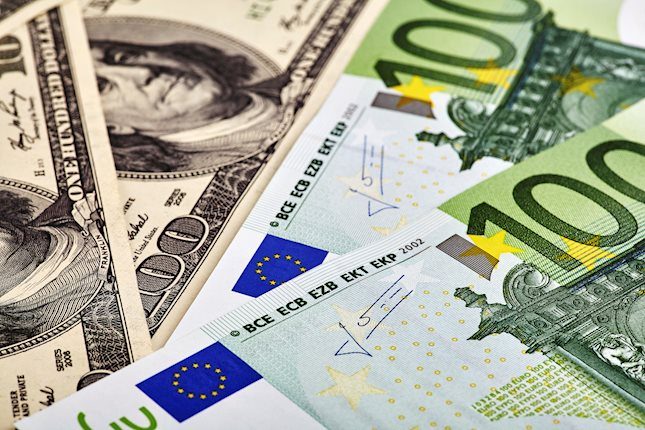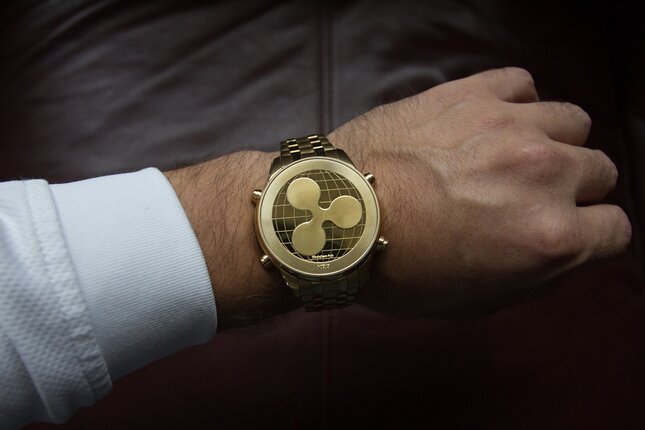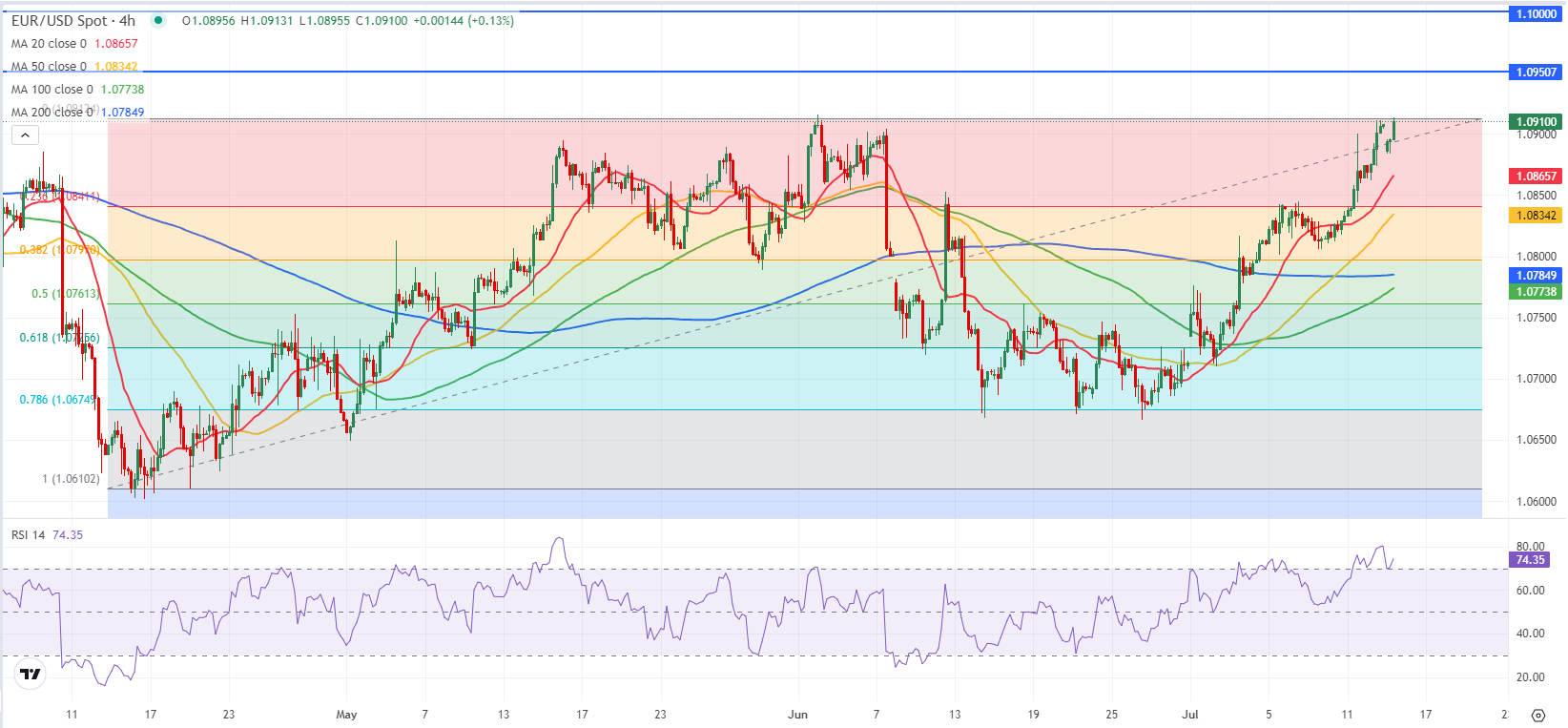- EUR/USD rose above 1.0900 after opening lower on Monday.
- Rising US stock index futures point to a positive shift in risk sentiment.
- Fed Chairman Powell will deliver a speech later in the day.
After posting strong gains in the previous week, EUR/USD opened lower to start the new week. The pair, however, managed to recover back above the key 1.0900 level during the European trading hours, erasing the bearish opening gap.
Euro PRICE Last 7 days
The table below shows the percentage change of Euro (EUR) against listed major currencies last 7 days. Euro was the strongest against the New Zealand Dollar.
| USD | EUR | GBP | JPY | CAD | AUD | NZD | CHF | |
|---|---|---|---|---|---|---|---|---|
| USD | -0.65% | -1.31% | -1.74% | -0.03% | -0.47% | 0.72% | -0.24% | |
| EUR | 0.65% | -0.47% | -0.78% | 0.93% | 0.34% | 1.71% | 0.75% | |
| GBP | 1.31% | 0.47% | -0.35% | 1.43% | 0.81% | 2.19% | 1.22% | |
| JPY | 1.74% | 0.78% | 0.35% | 1.74% | 1.32% | 2.67% | 1.58% | |
| CAD | 0.03% | -0.93% | -1.43% | -1.74% | -0.47% | 0.75% | -0.19% | |
| AUD | 0.47% | -0.34% | -0.81% | -1.32% | 0.47% | 1.37% | 0.40% | |
| NZD | -0.72% | -1.71% | -2.19% | -2.67% | -0.75% | -1.37% | -0.95% | |
| CHF | 0.24% | -0.75% | -1.22% | -1.58% | 0.19% | -0.40% | 0.95% |
The heat map shows percentage changes of major currencies against each other. The base currency is picked from the left column, while the quote currency is picked from the top row. For example, if you pick the Euro from the left column and move along the horizontal line to the US Dollar, the percentage change displayed in the box will represent EUR (base)/USD (quote).
News of an assassination attempt on former US President Donald Trump caused markets to adopt a cautious stance at the beginning of the week. At this point, it's difficult to assess the potential impact of this development on markets in the near term. In any case, rising US stock index futures, which were last seen gaining between 0.45% and 0.55% on the day, point to an improving risk mood already.
In the second half of the day, Federal Reserve (Fed) Chairman Jerome Powell will speak at an event organized by the Economic Club of Washington.
Following the soft inflation data published last week, markets are nearly fully pricing in a 25 basis points Fed rate cut in September. Hence, the positioning suggests that the US Dollar does not have a lot of room left on the downside even if Powell sounds in favor of a rate reduction in September. Nevertheless, a dovish tilt in Powell's tone could feed into expectations for a total of three 25 basis points rate cuts before the end of the year and still hurt the USD.
EUR/USD Technical Analysis
EUR/USD trades above 1.0900 after opening below this level. Once the pair confirms that level as support, it could target 1.0950 (static level) before 1.1000 (psychological level, static level). On the downside, 1.0850 (former resistance, static level) aligns as first support ahead of 1.0800 where the 100-day and the 200-day Simple Moving Averages (SMA) are located.
In the meantime, the Relative Strength Index (RSI) indicator on the 4-hour chart stays above 70, suggesting that EUR/USD could make a technical correction before the next leg higher.
Euro FAQs
The Euro is the currency for the 20 European Union countries that belong to the Eurozone. It is the second most heavily traded currency in the world behind the US Dollar. In 2022, it accounted for 31% of all foreign exchange transactions, with an average daily turnover of over $2.2 trillion a day. EUR/USD is the most heavily traded currency pair in the world, accounting for an estimated 30% off all transactions, followed by EUR/JPY (4%), EUR/GBP (3%) and EUR/AUD (2%).
The European Central Bank (ECB) in Frankfurt, Germany, is the reserve bank for the Eurozone. The ECB sets interest rates and manages monetary policy. The ECB’s primary mandate is to maintain price stability, which means either controlling inflation or stimulating growth. Its primary tool is the raising or lowering of interest rates. Relatively high interest rates – or the expectation of higher rates – will usually benefit the Euro and vice versa. The ECB Governing Council makes monetary policy decisions at meetings held eight times a year. Decisions are made by heads of the Eurozone national banks and six permanent members, including the President of the ECB, Christine Lagarde.
Eurozone inflation data, measured by the Harmonized Index of Consumer Prices (HICP), is an important econometric for the Euro. If inflation rises more than expected, especially if above the ECB’s 2% target, it obliges the ECB to raise interest rates to bring it back under control. Relatively high interest rates compared to its counterparts will usually benefit the Euro, as it makes the region more attractive as a place for global investors to park their money.
Data releases gauge the health of the economy and can impact on the Euro. Indicators such as GDP, Manufacturing and Services PMIs, employment, and consumer sentiment surveys can all influence the direction of the single currency. A strong economy is good for the Euro. Not only does it attract more foreign investment but it may encourage the ECB to put up interest rates, which will directly strengthen the Euro. Otherwise, if economic data is weak, the Euro is likely to fall. Economic data for the four largest economies in the euro area (Germany, France, Italy and Spain) are especially significant, as they account for 75% of the Eurozone’s economy.
Another significant data release for the Euro is the Trade Balance. This indicator measures the difference between what a country earns from its exports and what it spends on imports over a given period. If a country produces highly sought after exports then its currency will gain in value purely from the extra demand created from foreign buyers seeking to purchase these goods. Therefore, a positive net Trade Balance strengthens a currency and vice versa for a negative balance.
Information on these pages contains forward-looking statements that involve risks and uncertainties. Markets and instruments profiled on this page are for informational purposes only and should not in any way come across as a recommendation to buy or sell in these assets. You should do your own thorough research before making any investment decisions. FXStreet does not in any way guarantee that this information is free from mistakes, errors, or material misstatements. It also does not guarantee that this information is of a timely nature. Investing in Open Markets involves a great deal of risk, including the loss of all or a portion of your investment, as well as emotional distress. All risks, losses and costs associated with investing, including total loss of principal, are your responsibility. The views and opinions expressed in this article are those of the authors and do not necessarily reflect the official policy or position of FXStreet nor its advertisers. The author will not be held responsible for information that is found at the end of links posted on this page.
If not otherwise explicitly mentioned in the body of the article, at the time of writing, the author has no position in any stock mentioned in this article and no business relationship with any company mentioned. The author has not received compensation for writing this article, other than from FXStreet.
FXStreet and the author do not provide personalized recommendations. The author makes no representations as to the accuracy, completeness, or suitability of this information. FXStreet and the author will not be liable for any errors, omissions or any losses, injuries or damages arising from this information and its display or use. Errors and omissions excepted.
The author and FXStreet are not registered investment advisors and nothing in this article is intended to be investment advice.
Recommended Content
Editors’ Picks

EUR/USD sits at yearly lows near 1.0550 ahead of EU GDP, US PPI data
EUR/USD is trading near 1.0550 in the European session on Thursday, sitting at the lowest level in a year. The Trump trades-driven relentless US Dollar buying and German political instability weigh on the pair. Traders await EU GDP data and US PPI report ahead of Fed Chair Powell's speech.

GBP/USD holds losses below 1.2700 on sustained US Dollar strength
GBP/USD is holding losses near multi-month lows below 1.2700 in European trading on Thursday. The pair remains vulnerable amid a broadly firmer US Dollar and softer risk tone even as BoE policymakers stick to a cautious stance on policy. Speeches from Powell and Bailey are eyed.

Gold price hits fresh two-month low as the post-election USD rally remains uninterrupted
Gold price drifts lower for the fifth consecutive day and drops to its lowest level since September 19, around the $2,554-2,553 region heading into the European session on Thursday. The commodity continues to be weighed down by an extension of the US Dollar's post-election rally to a fresh year-to-date.

XRP struggles near $0.7440, could still sustain rally after Robinhood listing
Ripple's XRP is trading near $0.6900, down nearly 3% on Wednesday, as declining open interest could extend its price correction. However, other on-chain metrics point to a long-term bullish setup.

Trump vs CPI
US CPI for October was exactly in line with expectations. The headline rate of CPI rose to 2.6% YoY from 2.4% YoY in September. The core rate remained steady at 3.3%. The detail of the report shows that the shelter index rose by 0.4% on the month, which accounted for 50% of the increase in all items on a monthly basis.

Best Forex Brokers with Low Spreads
VERIFIED Low spreads are crucial for reducing trading costs. Explore top Forex brokers offering competitive spreads and high leverage. Compare options for EUR/USD, GBP/USD, USD/JPY, and Gold.
